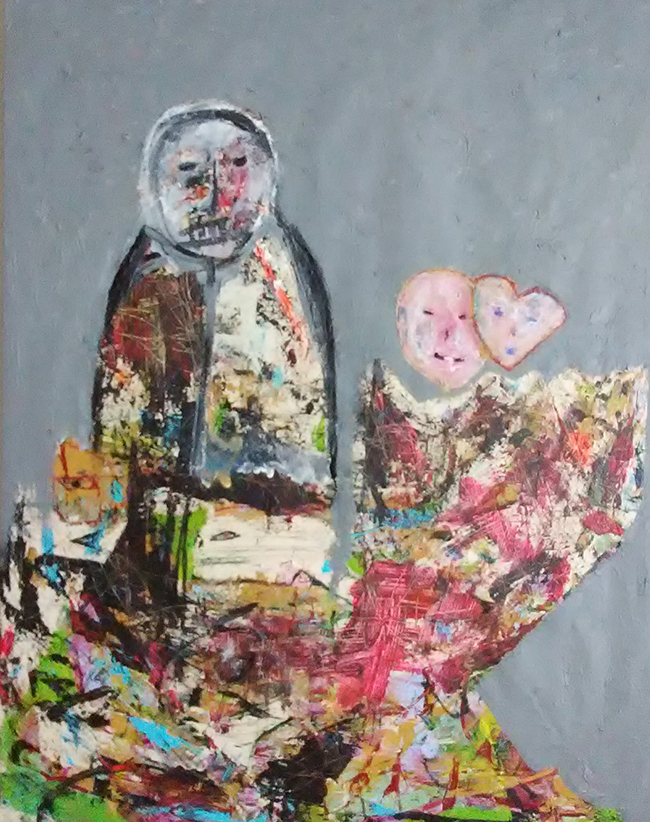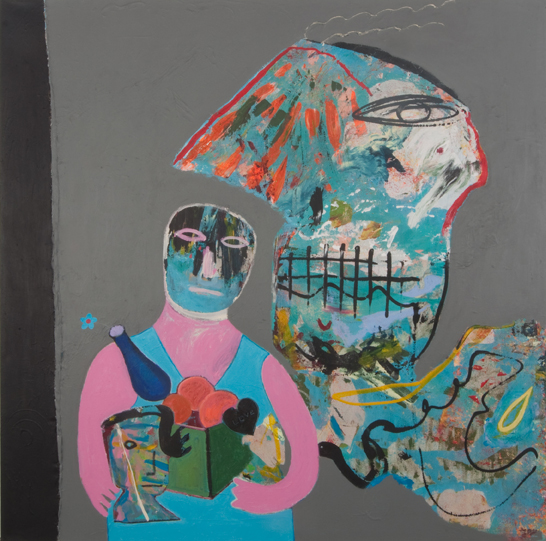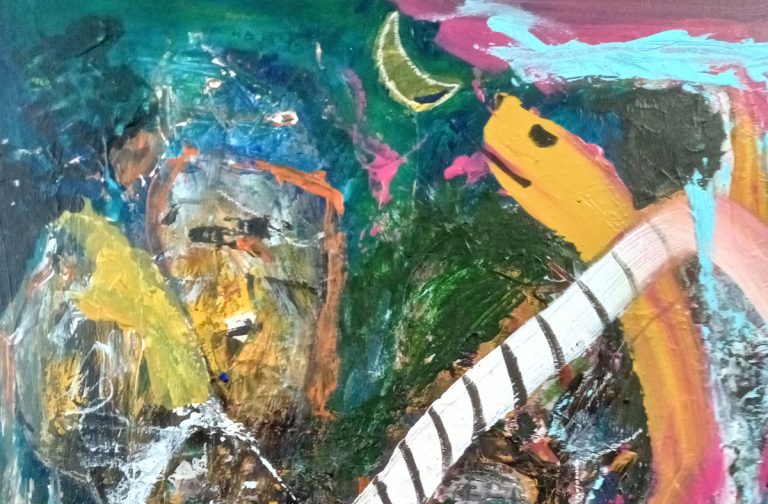Jesse A. Kantu earned his BFA in Sculpture from the University of Houston in 2006, with a Minor in Art History, laying the foundation for his thoughtful and reflective artistic career. His art focuses on the shared struggles of humanity, specifically addressing the brokenness that transcends cultural boundaries. Kantu founded Pyramid Art Services in 2011, a creative hub where artists are encouraged to find their voices and share their stories. He continued his studies and received an MFA in Painting from Houston Baptist University in 2015. Alongside his visual works, he ventured into writing, publishing EMERGING—New Contemporary Narratives in the 21st Century in 2020, a literary exploration of modern social complexities. Residing in Houston, Kantu blends his artistic practice with an insightful look at human nature, continuously challenging societal norms and inviting viewers to reflect on their own lives through his work.

Kantu’s painting The Hourglass (24 x 24 inches, acrylics on canvas) brings to light the tension between time, mortality, and the choices we make during our lifetimes. In this piece, a central figure is caught between two symbolic forces: life, represented by a vase of flowers on the left, and death, symbolized by a sculpture on the right. A cemetery scene looms in the background, with a cross reminding the viewer of the finality we all face. The composition asks the viewer to reflect on their own decisions and motivations, questioning whether their actions are driven by selfish or selfless intentions. The artwork emphasizes that regardless of one’s position or situation in life, it’s crucial to remain aware of the impact our choices have on ourselves and others. The balance of life and death in this piece challenges us to stay grounded in our values and continually strive to make a positive difference.

In Leaving You (40 x 30 inches, acrylics on canvas), Kantu tackles the theme of family dysfunction, a deeply emotional subject. The painting highlights how one individual, consumed by jealousy or resentment, can disrupt an entire family dynamic. The central figure is depicted as a monstrous presence, encroaching on two smaller, delicate shapes—a pink circle and a pink heart—representing siblings who must now fend for themselves. The crack in the foundation beneath them symbolizes the broken structure of the family. This powerful visual metaphor suggests that, while family should be a source of love and security, it can also become toxic when one member’s negative behavior threatens to destroy the harmony. Kantu’s message is clear: at times, the only way to preserve oneself is to leave behind what was once familiar, even if it means walking away from family bonds.
- Kissing the Moon* (24 x 24 inches, acrylics on canvas) explores the ongoing issue of migration and its effects on American cities. The painting captures the essence of how different cultures, languages, and ideas are reshaping the American landscape. Kantu illustrates this transformation by painting an influx of figures on the left, representing migrants entering the scene, while snakes—symbolizing the displaced native culture—slither away. This visual metaphor speaks to the complex interactions between the old and the new, raising questions about how American society absorbs, adapts, or resists these changes. Kantu does not shy away from the deeper implications of this migration—whether America’s resources, both economic and social, can continue to support the growing number of migrants. The painting urges viewers to contemplate the ongoing evolution of American identity, shaped by the continuous flow of new people and ideas.

In Snake Bitten (48 x 48 inches, acrylics on fabric), Kantu delves into the consequences of poor decision-making, particularly in the context of personal responsibility and selfishness. The painting presents a woman, visibly pregnant, clutching her few remaining possessions—symbolic items like a box of oranges, a flower vase, a doll, and a child. Rather than an umbilical cord, the woman is connected to her unborn child by a snake, representing the destructive force of her decisions. The ominous skull and iron gate in the background suggest a looming threat that is beyond her control, a result of the choices she has made. The viewer is left to question the consequences of living a life without regard for the future, particularly for those we bring into the world. Kantu’s powerful use of symbolism highlights the ripple effect of individual choices, especially when those choices are made out of self-interest rather than consideration for others.
Jesse A. Kantu’s work is marked by its deep exploration of human frailty and the consequences of our actions. Through symbolism and narrative, his paintings address universal themes—time, family dynamics, migration, and personal responsibility—that resonate across cultures. His acrylics on canvas tell stories that challenge viewers to confront the uncomfortable truths of life, while also offering a glimmer of hope for redemption. Whether focusing on the passage of time, the complexities of human relationships, or the shifting landscape of societal norms, Kantu’s art prompts reflection and conversation, inviting us to better understand ourselves and the world around us.

